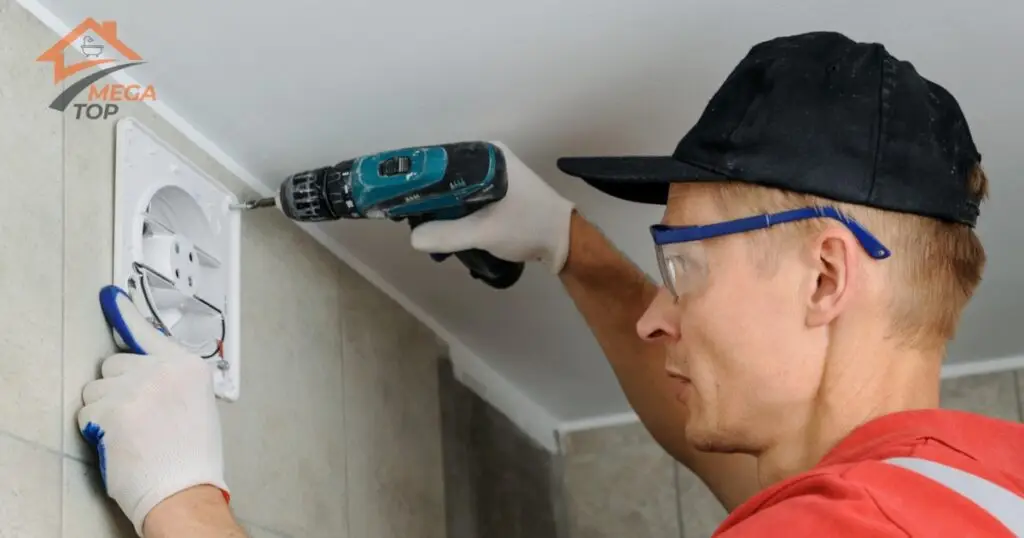Why is Bathroom Fan Replacement Important?
Bathroom fans play a crucial role in maintaining air quality and preventing moisture buildup. Over time, these fans can lose efficiency or malfunction, leading to poor ventilation and potential damage to your bathroom.
The Role of Exhaust Fans in Maintaining Air Quality
- Moisture Control: Removes humidity to prevent mold and mildew growth.
- Odor Elimination: Improves air circulation and reduces unpleasant odors.
Risks of Using Outdated or Malfunctioning Fans
- Inefficient fans may leave moisture lingering, leading to structural damage.
- Increased energy consumption and noise levels from older models.
How Often Should Bathroom Fans Be Replaced?
Knowing when to replace your bathroom fan ensures your bathroom stays ventilated and moisture-free.
Typical Lifespan of a Bathroom Fan
- Most bathroom fans last 10–15 years with proper care.
- Factors that may shorten lifespan:
- Neglected maintenance, such as dust buildup.
- Frequent use in high-moisture environments without cleaning.
Signs It’s Time to Replace Your Bathroom Fan
- Noisy Operation: Unusual rattling or loud humming sounds indicate worn-out parts.
- Weak Airflow: If the fan struggles to remove steam, it’s likely losing efficiency.
- Visible Damage: Rust or cracks on the fan housing suggest it’s time for an upgrade.
- Lingering Moisture: Persistent condensation on mirrors or walls indicates inadequate ventilation.
Maintenance Tips to Extend the Life of Your Bathroom Fan
Regular maintenance can keep your fan running efficiently and extend its lifespan.
Cleaning and Dust Removal
- Turn off the power and remove the fan cover.
- Use a vacuum or damp cloth to clean the fan blades and motor housing.
- Wash the grille with warm, soapy water to remove buildup.
Inspecting for Wear and Tear
- Check for loose screws or parts that may cause noise or vibration.
- Look for signs of overheating, such as a burning smell or discolored wires.
Upgrading to a More Efficient Bathroom Fan
Modern bathroom fans offer superior performance and energy efficiency.
Benefits of Modern Bathroom Fans
- Energy Savings: Use less power, reducing electricity bills.
- Quieter Operation: Designed to operate at lower noise levels (measured in sones).
- Enhanced Features: Options like humidity sensors, motion detectors, and integrated lighting.
Choosing the Right Replacement Fan
- Measure Airflow Capacity (CFM): Ensure the fan matches your bathroom size.
- Small bathrooms (<50 sq. ft.): 50–80 CFM
- Larger bathrooms (>100 sq. ft.): 100–150 CFM
- Consider Noise Levels: Look for models rated below 1.5 sones for quiet operation.
- Recommended Features: Humidity sensors, timers, and energy-efficient certifications (ENERGY STAR).
DIY vs Professional Bathroom Fan Replacement
Bathroom fan replacement can be a simple DIY project or a task for a professional, depending on your comfort level.
Steps for DIY Fan Installation
- Turn Off the Power: Ensure electrical safety by shutting off the circuit.
- Remove the Old Fan: Unscrew and disconnect wiring from the old unit.
- Install the New Fan: Connect wiring, secure the fan to the ceiling, and attach the grille.
- Test the Fan: Turn the power back on to ensure it’s working correctly.
Safety Precautions
- Always use a voltage tester before working with electrical components.
- Follow the manufacturer’s instructions carefully.
When to Hire a Professional
- Complex Installations: If ductwork or electrical upgrades are required.
- Building Code Compliance: Professionals ensure the installation meets local regulations.
Replacing your bathroom fan at the right time is essential for maintaining a healthy and efficient bathroom environment. Whether you opt for a DIY project or hire a professional, upgrading to a modern fan can enhance air quality, reduce energy consumption, and add value to your home. Ready to improve your bathroom ventilation? Start planning your bathroom fan replacement today!
FAQ
Bathroom fans should typically be replaced every 10–15 years, or sooner if performance issues arise.
Minor issues like loose screws or clogged grilles can often be fixed, but aging fans should be replaced for better efficiency.
Outdated fans may fail to remove moisture effectively, leading to mold, mildew, and even structural damage.
Choose fans with energy efficiency, low noise levels, and humidity control sensors for optimal performance.
- DIY Replacement: $50–$150 for a new fan and basic tools.
- Professional Installation: $150–$400, depending on labor and complexity.





